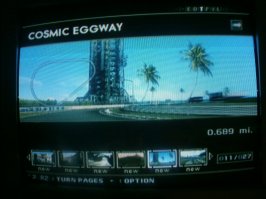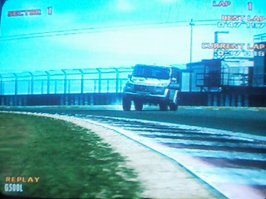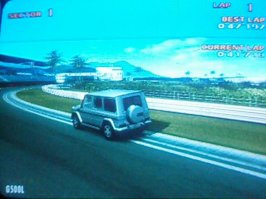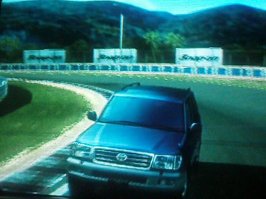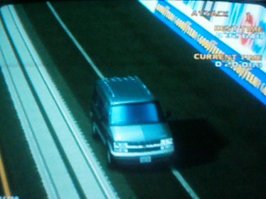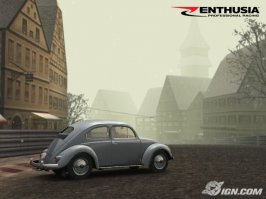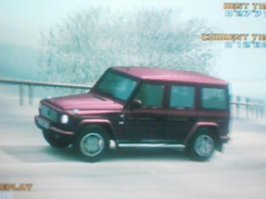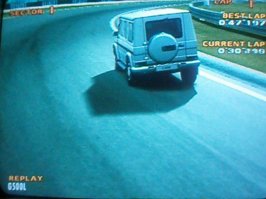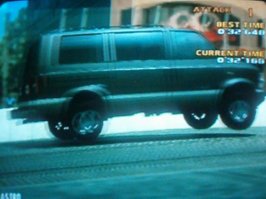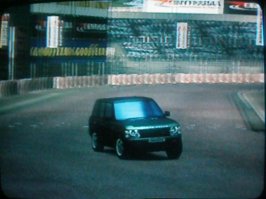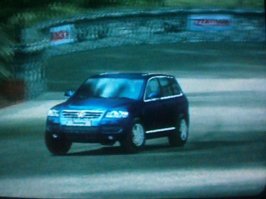Matej
Premium
- 2,002

- Zagreb
BIG SUV COMPARISON (BONUS: A VAN!)
Skip to Part 2 - Test Drive on Cosmic Eggway
Skip to Part 3 - Test Drive on Wintertraum
Skip to Part 3 - Test Drive on Wintertraum
Angels, have mercy on my soul... I can't believe I'm inclined to talk about those. But this is exactly what this thread will be about, you'll be reading my thoughts on the six utility vehicles that I assembled together for the purpose of reviewing them. Five big, nasty SUVs and a van. Holy, pickle...
Let's meet our miserable contestants, shall we?
THE GELANDEWAGEN
Once upon a time, an old "friend" of mine asked me how could I possibly compare anything to the mighty G-wagen? You know, how do I dare and stuff like that. He is one of those typical old-fashioned Eastern Europeans who refuse to acknowledge any vehicle that doesn't have a flashy German badge on its nose. He would eagerly waste hours and hours trying to find reasons to praise awesome German auto engineering and everything that resembles it. Even if the subject was a G-wagen, he still wouldn't give up. No wonder we're not in contact anymore.
The thing is, the G-wagen conceptually dates from the late 70's. It started off as an military vehicle, a working mule. Far from modern resemblance of a cosmetic product for rich people it is today. Its design is timeless, and its off-road abilities indisputable, but in every other field this is an obsolete product whose inner fundamentals haven't been changed for over 30 years. Naturally, this leaves lots of negative effects on driving dynamics, steering, fuel consumption, comfort.... pretty much every important portion of the car.
But you know what? I wouldn't say anything against the G-wagen if only it wasn't so god-damn pricey! They have jacked up the prices of these boxes to such enormous level, I sometimes think I'm being fooled by my own eyes! Would you believe that in early 2000's it was possible to buy two Toyota Land Cruisers or even three Land Rover Defenders for a price of a single G-wagen? And I'm not comparing the G-wagen to some random cars, I'm comparing it to its rivals, hard-core terrain vehicles that have very similar abilities to the G-wagen. I don't care if its entire body is galvanized and hand-made or if they are able to submerge to hell and get out intact, when something is overpriced, it is overpriced. Alongside so many cheaper alternatives out there, the G-wagen just isn't worth the money. Being the most expensive standard Mercedes-Benz out there, it spits vomit on the manufacturer's flagship models that actually do have a reason or two to be expensive. I can't possibly imagine what were they thinking.
Well, we can assume they were thinking money. Mercedes-Benz actually wanted to pull the plug on the production in the United States, but the demand was so high they decided to keep it rolling off the line. Needles to say, as long as people are ready to pay huge price to get one, it is likely that the situation is never going to become any better for us who use or would love to use G-wagen for actual work, but aren't wealthy enough.
But let's cut the crap and get to the point - what kind of model do we have in Enthusia? Is it a bad-ass AMG model or a standard one with a workaholic diesel engine?
It seems neither of the two, but something in-between. We have the G500L (infra: G), alleged runner-up of the range. It arrives with a 5.0 litre V8 engine assembling slightly below 300 horses. It seems a lot, but on a heavy brick like this, 300 hp is only adequate. I dare to say this thing needs as much power as possible. How else you're going to offset the loses you inevitably experience on corners?
And why is this not an AMG model? Mercedes-Benz already had few of those in production by the time Enthusia came out, you know. It's not that I'm disappointed with the developer's choice or anything, but it literally begs the question: why? Shame we'll never hear the answer.
It doesn't really matter though. The way I see it, AMG versions of the G-wagen boast nothing but raw power. Some of them do get things like lowered suspension or bigger wheels, but they mostly serve as decoration, it's not like the brick is going to turn into a flying carpet all of a sudden. Remember, this is a military vehicle at its finest. Besides, once you reach level 10 with the G, it will performs twice as better than any AMG model, so I don't think we're at any loss here.
Anyway, that's all I can say about this one for now. Let's move on to a next car.
A RANGER THAT POSES A DANGER...
I'm not a big fan of the British auto industry for a number of personal reasons, but I don't mind giving it credit where credit is due. The one of many goes to the Range Rover series for introducing the concept of the luxury SUV class to European customers.
It was by all means a frighteningly courageous move to launch a product like that back in the days when it was hard for British car manufacturers to achieve profit and remain competitive near all the cut-throat competition from Japan and the rest of Europe. If I was living back in the 70's, I wouldn't prophesy anything but demise of the Range Rover. No matter from what angle you look at the car, it really has no reasonable argument to exist. Luckily for Brits, continuous success of the model proved that our market is definitely keen on driving this type of cars after all.
People love the fine blend of luxury and off-road abilities wrapped in a charismatic British envelope. Driving a Range Rover has never been all about vanity and desire to stand above other people in traffic, it's the prestige and heritage of the company that counts as well. At least with the Range Rover owners you can be assure they appreciate more than meets the eye. Or at least they want you to believe that.
Nowadays buyers have a lot to look forward to as the Range Rovers keep getting better and better with each new generation model launched. The driving dynamics are getting there, along with the looks, which stepped up considerably with the latest L405 generation. The manufacturer can now sleep peacefully knowing it has a design people will droll over like never before. Indeed, the Range Rover series has come a long way since its inception in 1970, and it seems they've been selling in more "copies" than ever before.
There are some drawbacks to driving a Range Rover, of course. Ask any regular owner, whether he, slash she may be an asshole with obnoxious sunglasses and arrogance reaching to oblivion or a skinny lady who "accidentally" married to a footballer and is now enjoying fruits of his short-lived career. Any of them will tell you exactly the same thing; the number one constant issue on this car is reliability. When you buy an used model - or even a brand new one - this is something you'll have to keep your eye on. The list of things that can go wrong is big, and servicing them is not a joke!
Plus, there has been something about Range Rovers that keeps environmental activists on their toes. I think we can all guess what that is, right? Although other big-ass SUVs aren't more clean than an average Range Rover, they didn't pioneer the class, so naturally they don't take the heaviest burden. Still, such complaints these days make no real sense anymore as the SUV category has flooded the globe entirely, and it is clearly there is no point in fighting it.
All in all, should you ever buy a Range Rover, carefully inspect the car inside out, and keep your eye on rear-view mirror for any unwanted pursuers in white coats.
For the Range Rover generation we have in the game (infra: Range) Land Rover coquetted with BMW before the development of the model commenced, so early models found themselves having German engines. As a result, our model is equipped with a 282hp M62 engine, the same unit that powered the old M5 (in bored edition, of course). But in case you expect to hear traditional V8 roaring, look elsewhere, BMW's V engines always have more manners audio-wise. But I'm not going to spoil things yet, we'll have chance to do it later on.
Next ride, please!
PER ASPERA AD ASTRO...?
Yeah, right... more like per aspera ad stool sample.
But it makes you think, would it be worth going through God-knows-what troubles to drive the Chevrolet Astro, perhaps the most genuine utility roller you're going to find in this game (or any other, for that matter)? I'll let you think about that. In the meantime, I'll do the basics first. How the hell would you even classify this vehicle? Is it a van or a truck?
I guess it could be both to USA guys, but to us Euro folks it's clearly a van. So I think I'm going to call it a van. Any objections?
Most people would spontaneously say that telling a difference between the Astro and a typical European van is a piece of cake. Commonly they would focus on external appearance in one form or another, and start judging from there. But guess what, things aren't that simple. While it is true that our vans generally like to grow in height and length more than they do in width, numerous exceptions from all around the globe suggest you shouldn't rely on this rule of thumb too much. I remember a bunch of European vans that could easily drive on American roads just as I know few American vans (not pick-ups or trucks, mind you) that are very modest in size.
In this case perhaps it's best to look beneath the hood and start separation from there. You see, the Astro did not have a range of diesel engines. Now, that makes things way different because in Europe we can't imagine a van without a diesel engine. Not with our petrol prices, no. We pay like twice the amount of what the Western hemisphere does to get the same amount of black liquid. So naturally, it wouldn't be advisable to drive something like the Astro on our roads. With no coupons for free EU gas or LPG installation, the happiness of owing an import would be short-lived.
Not only the Astro lacks adequate diesel engine, but it doesn't have much petrol ones to offer either. As a matter of fact, you only get to choose one engine, a "compact" 4.3 litre V6, and that's all. You would expect quite a lot from this one given the size of the engine bay (or depth in this case), but 190hp and 250 lb.ft. of torque is all you really get. Modest output, to say at best. I'm not expecting much from the engine considering the magnitude of the object it has to drag around, but we won't know until we try...
But is it okay to put a thing like the Astro in a game like Enthusia? It's a van, for crying out loud. Why would you do such a thing? WHY WOULD YOU PUT A VAN IN A RACING GAME?! Konami is not even an American company, so what for?
Believe it or not, but the Astro actually has its own cult following in Japan. There is a whole group of passionate individuals out there who would do absolutely everything to obtain, drive and service one of these. And once you think about it, it's not hard to understand why. The Astro has absolutely nothing in common with typical vehicles you can find roaming around Japan. It's a big, thirsty container with no compassion for narrow and crowded streets of this small country. Simply put, it is different. And for that reason alone it tends to draw people from outer cultures who want to try out new things or simply stand out from the crowd. It has been a common desire for both sides of the world to try out each other's products and see how they stack up against local cuisine. People from the east want to know how a van from the west feels like, much like we want to know what's like to drive one of those tiny kei cars. Get it? Automotive industry bonds nations much like tourist attractions you dream of in brochures.
And if that's not enough, you have camping freaks and people who stick up for a particular lifestyle. You may as well have people with odd taste in cars or anything that resembles one. If there is one thing I learned about Japan, it's their unusual taste for vans and wacky modifications.
Therefore, it's no wonder why the Astro proved to be such a popular pick out there. Allegedly it was a top American import, though official records are hard to come by because of the so-called grey import. Nowadays you can find bunch of Astros being listed for sale to Japanese customers almost as if Japan was Astro's homeland. Goo-net exchange website lists tens and tens of adverts for this big-ass can. Amazing.
Now that we have established what the Astro really is and why it makes an appearance in Enthusia, let's drive the damn thing. Oh, wait... we have more cars to present.
DAS SUV
Named after the North African inhabitants, the Touareg (infra: T-reg) was the Volkswagen's first trip to the realm of bulky SUVs. Yes, for real! Although Volkswagen was no stranger to four-wheel drive systems and their applications to its own cars, in the last few decades it had nothing you could classify as a terrain vehicle. For a creator of the Kubelwagen and Schwimmwagen, this was unforgiving.
In 1986 Volkswagen made its first move by entering a collaboration with Steyr-Daimler-Puch of Austria to produce a four-wheel drive Golf, which would later evolve into Golf Country. It was an interesting product for its time, somewhat laying the basis for future crossovers. There was only one little big problem - the Country was conceptually a bit too extreme for an average buyer, which meant it couldn't succeed even if it wanted to. Definitely not a feather in Volkswagen's cap, who decided to abort the production after less than 8,000 examples produced.
With such modest background, you wouldn't expect anything but tits from Volkswagen. But then came a T-reg, a turning point for the manufacturer.
Why was the T-reg so special? Well, primarily because it wasn't. It wasn't special at all, as a matter of fact, it suffered from all the same problems that marred any other oversized car with big tires. In addition, owners who were caught on earlier examples reported numerous reliability problems, some of which were enormously expensive to remedy. Volkswagen managed to pull out enough monkey wrenches over the time to improve reliability statistics, but that could do little to appease anger of customers who already invested a little fortune into the car expecting to receive flawless German quality.
The T-reg was a decent seller in countries where Volkswagen was held in high esteem, but globally it never managed to beat the figures from the BMW X5 or Mercedes-Benz M-Class, the two of its main competitors. Why is that, beats me. In terms of pricing, all three had equal chances of taking the class-leading position, and they weren't very far from each other performance-wise either. Perhaps the T-reg was at disadvantage being a parachuter landing on a territory two years after these two came out, who can tell... but I guess Volkswagen was happy with its current position on the market, however debatable it may be, because the T-reg is still being produced to this very day.
One thing is sure, Volkswagen managed to produce a car that was equally competent on road as it was off road. How much competent, that's another story, but it did had fair amount of abilities thanks to its locking differentials, optional self-levelling suspension, and low-range gears.
But to make sure nothing would go wrong during the production, Volkswagen decided to play strategically and co-develop the car with Porsche and Audi, which is why we got the Cayenne and Q7 in first place.
Yes, even Porsche was part of this heavy load of pretentious grease development. What was the world coming to?
This naturally begs a little question - does the T-reg drive like a Porsche?
We are going to find that out very soon, no worries. But for now, we need to ensure that we have enough power on disposal to face the G, currently the most powerful car on the test.
Luckily, the T-reg doesn't disappoint in that regard. Deep inside this big menace rests a 4.2 litre V8 with over 300 horses ready to gallop on your command. Mind you, this is not the best model in the range, but a runner-up, just like in the G case. If only Enthusia came out few months later, maybe we would be talking about the 6.0 W12 T-reg now instead of this. Just imagine, having an engine from Volkswagen Nardo in a car like this... Well, for the sake of this review, I'm glad that the T-reg has an engine that is matched to the rest of the squad.
As you can see, Volkswagen is no longer experimenting with jacked up Golfs. This is an all-new, inconveniently oversized, unbelievably obese, and irreparably worthless product. Yes, it's an SUV, Volkswagen finally made it. And to be honest, I wouldn't be surprised to see it excelling its rivals. Not only because it has the best power-to-weight ratio of them all, but because it was built on modern SUV basis which dictate a car should be drivable on public roads regardless of its weight, size or other masculine attributes. If there is one thing all other cars on this test share, it's the Indiana Jones nature that pushes the driving dynamics to the far background. The T-reg is a step in a different direction (not necessarily right direction), and because of that reason alone, it could have the edge over the rest.
So, excuse me from expecting a lot from it, but I want this concealed Porsche badge to pay off, understand?
SHOGUN WAR
Would you say the foreseeable future is looking bright for Mitsubishi? Perhaps you could, though nobody can tell for sure. They have been struggling to survive, which is evident from the car list that hasn't really received any major update since... eh, since... he-he, could you please give me a minute? I need to jog my memory.
Only time will tell how the manufacturer will perform and whether we'll see it making any major moves in the upcoming months. Allegedly it's turning its production to electric, hopefully it will become a major player in that field. Some of our taxi services already use Lancers powered by alternative fuel, you know.
But for now, we don't need to bother our heads with that, let's just focus on the 90's, a period during which Mitsubishi was giving birth to some of the most iconic cars out there, and polishing those that had been around from before. The car we have on the test today belongs to the latter group.
The Pajero is considered to be one of Japan's big three when it comes to serious off-roading. It is a classic tool, a workhorse for pulling and towing all the things a man doesn't want to do, and for exploring all the exotic places around the globe a man wants to do. It may not be as long-lived as the Land Cruiser or Patrol, or as iconic as the G-wagen, but it does what it is supposed to do, and most importantly, it is reliable. Of course, servicing isn't cheap, but that's the price you have to pay to mountaineer with a car.
Much like the other two (or three, I mustn't disregard the G-thing, even though I would dearly do so), it has a pedigree out there where boots worth more than shoes, and it is a great off-road weapon. But can it behave on track? In that regard, what the hell can we really expect from it?
First, let's start with nomenclature, because it's damn perplexing. The classic Pajero was manufactured under different names depending on the market, and some of the names were applied to models that didn't have much in common with the classic Pajero itself. This makes the differentiation so much tougher and complicated especially if you're not reading from reliable sources. The most common mistake would be to mix the classic and Sport model, because both were equally familiar and common on roads. From what the internet told me, the Sport model is based on a pick-up model, it sits lower, and has a closer gearbox. It seems they wanted to appeal to casual buyers by offering a full-size SUV with characteristics of an ordinary car. Good intentions, but I don't know how much this could appeal to anyone given it was as much of a sportsman as I was in my earlier days (in other words, a waste). But I guess it is better than the classic Pajero. People who did drive it say it certainly is better, so we have to believe them, right?
And then we have the looks. The spare tire hanging on the trunk panel and modest two-tone colour selections almost scream "I off-road, baby!". At first glance everyone would agree that this one wasn't built for anything other than mud or snow. Great, I just hope it doesn't drive like that.
It's got some power too, who could tell... the subject is a 3.5 litre V6 claiming 217hp. This power was achieved thanks to the gasoline direct injection technology, otherwise it wouldn't even have 200hp. It's a pretty low number for a car weighing 1930 kilos, but given it's in the D class along with the Touareg and the G, perhaps I should shut up and give this little bastard a chance.
One thing that makes me happy is the torque bias. Allegedly, until you start touching all the pedals and buttons in the car, the Pajero has a 33-67 torque split ratio by default. Combine this with a short wheelbase, and we might be on to something....
CRUISER - LOSER
Once upon a time, a wise man seated on a chair and engraved few words into wood - a man should never judge a book by its cover. The idiom that would last for generations to follow is now flashing before my eyes as I inspect the mighty Land Cruiser in its full glory.
Okay, I get the point, I should do some driving first before setting the car on fire. But you have to understand me, how am I supposed to judge a car that has two and a half tons of pure weight and an engine completely incompetent (or should I say impotent...) to drag all that around? With all due respect to our wise man from the beginning, but I think I have all the rights to judge this book however the hell I want.
The Cruiser actually does have qualities worth an applause, though most of those mean nothing in a racing game like Enthusia. So in order for me to appreciate its presence in the game, I have to look further from the realm of virtual driving and check out why is that people love this car so much (those who own it, of course).
Well, because it is reliable, what else? Much like the Pajero or Patrol, it has that reputation of being an indestructible, often over-engineered machine that needs hell of a lot abusing and aggression to fall on its knees. This would explain why it is such a popular choice in countries with extreme climate conditions or unreachable terrain. Hm, doesn't that sound familiar? Almost like we have been here before. Yes, I'm alluding to the G-wagen again. But let me tell you something, no matter how much you prefer the G-wagen over the Cruiser (lots of people do this), never will the G-wagen be as affordable as the Cruiser (or any other SUV for that matter). I'm sure people are aware of that, which is the main reason why sales of the Cruiser aren't going down, but up. Long time ago total production of all Cruiser variations reached a 7-digit number, a feat in its own class.
To this very day Toyota continues to insist on production of two separate models, one for those who spend majority of driving outside tarmac (the J70 is the latest, first introduced in 1984), and one for urban boys who just want show off (the latest is the J200, born in 2007). The model we have in the game is the J100, a predecessor of the J200, and the first of probably many bulky models that are scheduled to appear in future. Although it introduced many new technologies, good chunk of its components were transferred from the previous model (J80), including the engines. Raw power is not what we are going to get from those, though. The grand daddy of the range - the 4.5 litre in-line 6 - received a substantial increase in power over the previous model, but not enough to hit value of 250, which overall isn't anything special, right? The J100 was also the first model in the range to receive a new V8 to please customers on the American market, but with even lower power than the 4.5 litre, it has nothing that would interest us.
So... which of these two did we get? Neither, that's the problem. We got a diesel. Come again? Yeah, I know... let that sink in.
We got a 4.2 litre turbocharged diesel pushing out 190 horsepower and 318 lb-ft of torque. Please someone pinch me because I can't believe this is happening. I mean, who approved this? I can understand that a diesel in real life is probably the only reasonable option for a car this big, but who thought that a diesel would be a fine choice for an SUV in a game revolving around circuit racing? To further fuel the fire, the engine is paired with a 4-speed automatic gearbox. Oh, my... I can already sense how much of an excitement accelerating with this thing will be. I have seen so many wicked and boring combinations in racing games, but this one takes the cake. I'm dead serious!
This is why the Cruiser is last on the list, I was holding back myself from reviewing it knowing it has all the dullest car features and characteristics you can think of. How the hell I am going to face the rest of the SUV squad? It's already in a disadvantageous position being in the E class. We must find something to rely on quick, there must be something...
Okay. Now that we have introduced ourselves to all six contestants, there is only one thing left to do - drive. Let's drive one by one, and see which one can emerge from the sea of uselessness. Let the show commence!
Stay tuned for part II.
Last edited:

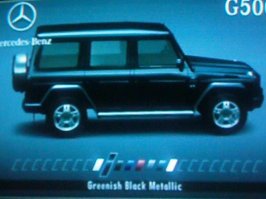

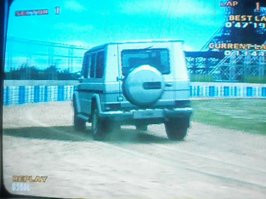
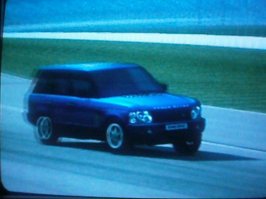

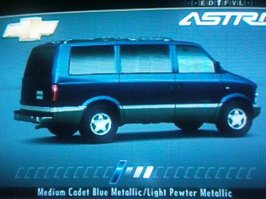

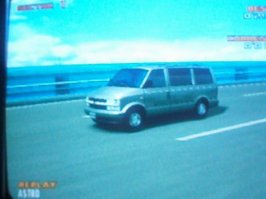
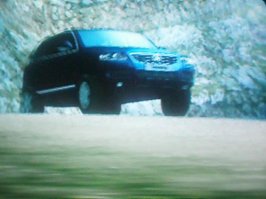

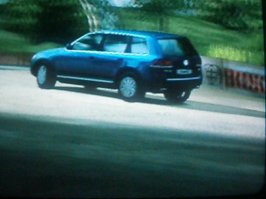


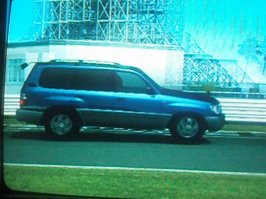

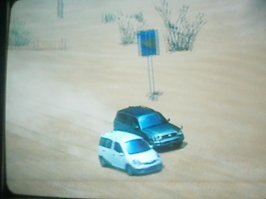
 I particularly liked the part under the Astro about different parts of the globe being mutually interested in vehicles from each other's cultures. Of course, Japan has its own van-enthusiast subculture as well, which is why we've got the Elgrand and Alphard V, and also helps to explain the Astro's debut as a playable vehicle in a racing game.
I particularly liked the part under the Astro about different parts of the globe being mutually interested in vehicles from each other's cultures. Of course, Japan has its own van-enthusiast subculture as well, which is why we've got the Elgrand and Alphard V, and also helps to explain the Astro's debut as a playable vehicle in a racing game. 

